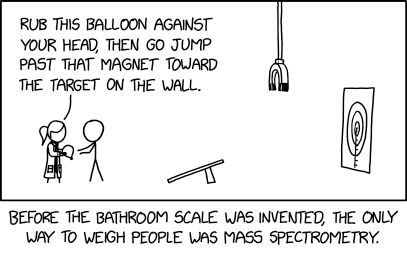Robbe Devreese
@robbedevr.bsky.social
150 followers
140 following
2 posts
PhD student in computational proteomics
Posts
Media
Videos
Starter Packs
Reposted by Robbe Devreese
Reposted by Robbe Devreese
Reposted by Robbe Devreese
Reposted by Robbe Devreese
Reposted by Robbe Devreese
Reposted by Robbe Devreese
robbin
@robbinbouwmeester.bsky.social
· Jun 4

DeepLC introduces transfer learning for accurate LC retention time prediction and adaptation to substantially different modifications and setups
While LC retention time prediction of peptides and their modifications has proven useful, widespread adoption and optimal performance are hindered by variations in experimental parameters. These varia...
www.biorxiv.org
Reposted by Robbe Devreese
Reposted by Robbe Devreese
Reposted by Robbe Devreese
Robbe Devreese
@robbedevr.bsky.social
· Feb 23

Collisional cross-section prediction for multiconformational peptide ions with IM2Deep
Peptide collisional cross-section (CCS) prediction is complicated by the tendency of peptide ions to exhibit multiple conformations in the gas phase. This adds further complexity to downstream analysi...
www.biorxiv.org
Reposted by Robbe Devreese
Reposted by Robbe Devreese
robbin
@robbinbouwmeester.bsky.social
· Feb 23
Robbe Devreese
@robbedevr.bsky.social
· Feb 23

Collisional cross-section prediction for multiconformational peptide ions with IM2Deep
Peptide collisional cross-section (CCS) prediction is complicated by the tendency of peptide ions to exhibit multiple conformations in the gas phase. This adds further complexity to downstream analysi...
www.biorxiv.org
Robbe Devreese
@robbedevr.bsky.social
· Feb 7

TIMS2Rescore: A Data Dependent Acquisition-Parallel Accumulation and Serial Fragmentation-Optimized Data-Driven Rescoring Pipeline Based on MS2Rescore
The high throughput analysis of proteins with mass spectrometry (MS) is highly valuable for understanding human biology, discovering disease biomarkers, identifying therapeutic targets, and exploring pathogen interactions. To achieve these goals, specialized proteomics subfields, including plasma proteomics, immunopeptidomics, and metaproteomics, must tackle specific analytical challenges, such as an increased identification ambiguity compared to routine proteomics experiments. Technical advancements in MS instrumentation can mitigate these issues by acquiring more discerning information at higher sensitivity levels. This is exemplified by the incorporation of ion mobility and parallel accumulation and serial fragmentation (PASEF) technologies in timsTOF instruments. In addition, AI-based bioinformatics solutions can help overcome ambiguity issues by integrating more data into the identification workflow. Here, we introduce TIMS2Rescore, a data-driven rescoring workflow optimized for DDA-PASEF data from timsTOF instruments. This platform includes new timsTOF MS2PIP spectrum prediction models and IM2Deep, a new deep learning-based peptide ion mobility predictor. Furthermore, to fully streamline data throughput, TIMS2Rescore directly accepts Bruker raw mass spectrometry data and search results from ProteoScape and many other search engines, including Sage and PEAKS. We showcase TIMS2Rescore performance on plasma proteomics, immunopeptidomics (HLA class I and II), and metaproteomics data sets. TIMS2Rescore is open-source and freely available at https://github.com/compomics/tims2rescore.
pubs.acs.org
Reposted by Robbe Devreese










